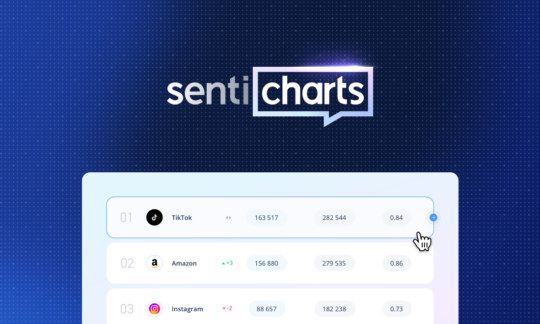The Top Do’s and Don’ts for Brand Success on Twitter
Most brands on Twitter fall into one of three categories based on the company’s marketing approach. Let’s call them basic, intermediate, and advanced.
Basic: Some brands simply maintain a Twitter business profile, with no other form of activity or involvement. That’s a missed marketing opportunity with Twiter’s 330 million monthly active users.
Intermediate: A more common approach is to treat Twitter as yet-another social media channel. The Marketing team might modify posts to suit Twitter’s character limits, and choose unique hashtags, but essentially they are cross-posting the same content across multiple social channels. This method provides high potential reach for your brand, but typically lacks high engagement. It’s a broadcast approach in a culture built around active conversation.
Advanced: The advanced approach, adopted by the most successful brands on Twitter, involves customizing the company’s marketing plan specifically for Twitter’s unique platform and culture.
Whichever group your company falls into, we’re here to help you take it to the next level. The first step is recognizing and adapting for the aspects of Twitter that are unique from other social media platforms. We’ve collected these as a series of do’s and don’ts to help you move your brand forward, without any embarassing missteps along the way.
Do Twitter best practices really make a difference?
You’ll find Twitter tips and tricks on hundreds of blog posts on the Internet that make it all seem so easy. It can be tempting to dive in on a trending topic – let’s say by Tweeting a meme you create – with the hope of being the next viral marketing success story. But ill-considered Tweets are not only likely to fall flat, they may generate a reaction you hadn’t intended. Always remember that your brand’s reputation is at stake, which is why we’re including important don’ts as well as the do’s.
More often than not the most successful brands on Twitter are guided by a firm understanding of the fundamentals, and perhaps blessed by a little luck or perfect timing. No one hits a home run the first time they swing a bat. But with solid fundamentals and an understanding of how to use Twitter professionally, you can start reproducing a succession of small wins that drive marketing gains.
Twitter Do’s: Best practices for business success
Do… know your audience, and add value with relevant content
Even if you’re new to Twitter, you’ll have a picture of your ideal customer in mind. The closer you get to the mental model of the people who need your products, the more you can align to their interests, craft interesting content to share, and offer them support. When you provide value to a well-targeted audience, you’ll soon start attracting other potential customers with similar qualities.
Do… keep your ear to the ground
The ability to listen is a vital skill for successful brands on Twitter. Ensure your notification preferences are set so that you’ll receive notifications when your business profile is mentioned. Many companies automate their social listening using platforms like SentiOne Listen. These tools reduce manual effort, and can also find references to your brand where you weren’t tagged with an @mention. Listening involves more than just your brand – track important topics, and your competitors too.
Another tip for active listening is, once you’ve determined influential voices in your community, sort them into Twitter Lists (e.g. competitors, industry influencers, customers, etc.) to provide you with segmented Twitter newsfeeds that are easier to digest.
Do… experiment with multiple forms of content
There’s plenty of research to show that using visual media on Twitter can drive a huge spike in engagement. One study found that using photos resulted in a 35% boost in Retweets, while another noted that use of videos drive 10x engagement. Here’s an example where cross-posting content to other social media channels might miss some important Twitter nuances. Twitter sets limits on the duration of video content per post.
Do… link your message to broader topics/conversations
If you’re posting relevant messages to your well-targeted audience, you’re off to a great start. But you can also extend your reach through effective use of hashtags. Here are some best practices:
- Choose consistent and memorable hashtags. The more words and room for typos, the less likely a hashtag is to gain traction and re-use.
- Explore before you Tweet: Use the Explore tab to find hashtags currently in use by your peers. Check your brand mentions as well for recurring hashtags.
- Invent your own: Creating a branded hashtag is a way of starting a new conversation relevant to your brand. Hashtags can also significantly boost the reach of a promotion or a campaign (e.g. ShareaCoke).
- Elevate your branded hashtag with advertising. Twitter offers an ad feature that displays a unique emoji whenever a specific hashtag is used on Twitter.
Do… participate!
For your brand to be successful on Twitter, you’ll need to be ready to jump in and join the conversation. Here are some best practices for getting more involved:
- Retweeting is a great way to share meaningful content from other Twitter users. Adding a comment with value-added anecdotes, experience, or wisdom adds additional value. It also makes it more likely to attract interest from the original Tweet author.
- Always consider the thoughts and feelings of the community.
- When problems arise (e.g. negative feedback), don’t overreact. Take a calm approach and strive to be helpful.
- Don’t be serious ALL the time. Experiment with some humour in your replies and Tweets
- You don’t have to be @mentioned in order to respond when your brand is referenced. Popular brands like Xbox have delighted their fans by responding to their Tweets with a few words of encouragement or thanks.
- Credit others if they said it first. When referencing others, @mention them to let them know you’re talking about them.
Do… optimize your business profile for results
Your profile is the most persistent representation of your brand on Twitter, so make every field and option count. In particular, the bio should be a concise and compelling summary of what your company does and why that is important. Include a link to the most relevant page on your website (often the homepage, but not always). Be sure to revisit your profile periodically to keep it up-to-date. You may also want to pin a Tweet to your profile, choosing a top Tweet that sits permanently above the others.
Do… know your (engagement) score and other KPIs
You should access Twitter analytics regularly as you implement your marketing strategy. One particularly important metric is your Twitter engagement score. Your Twitter engagement score is a measure of how other Twitter users are engaging with your content. Likes, comments, and Retweets will drive your engagement scores higher.
Twitter Don’ts: Mistakes that can burn your brand
Don’t… over-sell or be egocentric
Constantly posting and commenting about only one thing – your brand or your products – is the fastest way to turn off your followers. Social selling is real and effective, but works best when you regularly add value to conversations through sharing your knowledge or expertise in a way that helps others. Aim to engage your audience with a healthy mix of content from 3rd party sources, content from your company, and sometimes things that are just lighthearted and fun.
Don’t… attempt to buy likes or followers
Be wary of any offer promising to buy Twitter likes or buy Twitter followers for your brand. The promised results may sound perfect, but you simply aren’t able to buy “real” Twitter followers who will care about your brand. More than likely, you’ll dilute your audience with irrelevant or outright fake accounts. Stick with growing your followers through great conversations and content shared with relevant groups.
Don’t… send auto-response comments or direct messages
Some commercial services allow you to configure and send auto-responses to other Twitter accounts based on specific actions or terms they have used. As mentioned in our do’s above, automating your social listening so that your team is alerted when your brand, industry topics, or your competitors are mentioned is a good practice. But automating responses to these mentions or events is a bad idea. For one thing, it’s generic. For another, your auto-response might be missing critical context that makes the response completely irrelevant or worse, inappropriate. Keep your messages thoughtful and personalized.
Don’t… overuse hashtags
If you’ve seen Tweets that read like a laundry list of hashtags, you’ve encountered someone pushing it too far. You want the hashtags you choose to be relevant, intriguing, and memorable. Twitter recommends using no more than two hashtags per Tweet. Never use irrelevant hashtags.
Don’t… Tweet everything … then nothing … then everything
When you post sporadic batches of Tweets, you risk upsetting the balance of too much and too little. Posting 20 Tweets on a Monday morning would likely cause your followers to miss Tweets they might have enjoyed. If you follow that up by not Tweeting for a month, you may have lost some clout in your community by not engaging for some time. Strive to find the right cadence and the best times of the day and week to post.
Take an informed approach to steady Twitter growth
Unfortunately, there are no Twitter cheats or hacks that can create easy wins for your brand. Achieving success for your brand on Twitter requires knowledge of fundamental social media best practices. To excel on Twitter’s unique environment, follow our do’s and don’ts and you should see steady growth in your followers and engagement rates.
Improve your social listening with SentiOne
With SentiOne you can automate the time-consuming task of collecting, analyzing, and reporting your social media effectiveness across Twitter, Facebook, Instagram and other social platforms. For more information or to book a demo, visit SentiOne.



